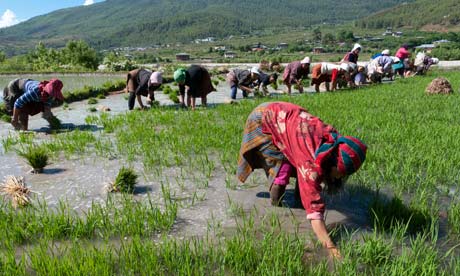Only 55 percent of the world’s yield calories are really consumed straightforwardly by individuals. An alternate 36 percent is utilized for creature sustain. What’s more the staying 9 percent goes to biofuels and other modern employments. (Those figures originate from this paper by Emily Cassidy and different scientists at the University of Minnesota’s Institute on the Environment.)
The extents are much all the more striking in the United States, where only 27 percent of product calories are devoured straightforwardly — wheat, say, or products of the soil developed in California. By differentiation, more than 67 percent of yields — especially all the soy developed in the Midwest — goes to creature sustain. What’s more a parcel of the rest goes to ethanol and different biofuels.
Some of that creature nourish in the end gets to be nourishment, clearly — however its a much, a great deal more circuitous methodology. It takes around 100 calories of grain to deliver only 12 calories of chicken or 3 calories worth of hamburger, case in point.
So why does this guide make a difference?
The guide itself originates from Jonathan Foley’s intriguing, outwardly rich investigation in National Geographic of how we can potentially bolster everybody as the world’s populace develops from 7 billion today to 9 billion by mid-century. (Foley guides the University of Minnesota’s Institute on the Environment.)
Encouraging 9 billion individuals won’t be simple: that is essentially like adding two new Indias to the world in the following few decades. Also, making matters considerably trickier, people have now developed the greater part of the world’s arable area and are pushing up against the breaking points of freshwater utilization. So the customary system of “discover new farmland to develop more sustenance” is getting even harder.
There are loads of conceivable methodologies here. Agriculturists could build horticultural profit by boosting yield yields — either through new cultivating systems or through enhanced harvest hereditary qualities. However regardless of the fact that the quick rate of change in yield yields over the twentieth century proceeded with, that still wouldn’t deliver enough nourishment for everybody.
An alternate probability, as the guide above shows, is that the world could dedicate additionally existing farmland once again to encouraging individuals. Once more, as the numbers propose, only 55 percent of product calories go straightforwardly to individuals. The rest goes to biofuels or creature encourage. People can’t consume biofuels, clearly.
Furthermore creature food is likewise a wasteful method for nourishing individuals — around one-tenth as proficient, on a calorie premise, as consuming yields straightforwardly.
One ramifications of that will be that, as nations like China and India develop and expend more drain and meat, the weight on worldwide farmland will develop. Yet, then again, if the world moved even a little parcel of its eating methodology far from asset escalated meats or developed less biofuels, we could wring more sustenance calories out of existing farmland.
There are different systems as well, which Foley points of interest in his piece. Numerous nations still don’t cultivate as proficiently as they could because of inadequate compost utilization. Furthermore a considerable measure of nourishment still gets squandered, either by shoppers or because of poor stockpiling foundation.
One of Foley’s associates, Paul West, as of late distributed a paper in Science demonstrating that cultivating tweaks in simply a handful of nations could alter a great deal of these inefficiencies.

